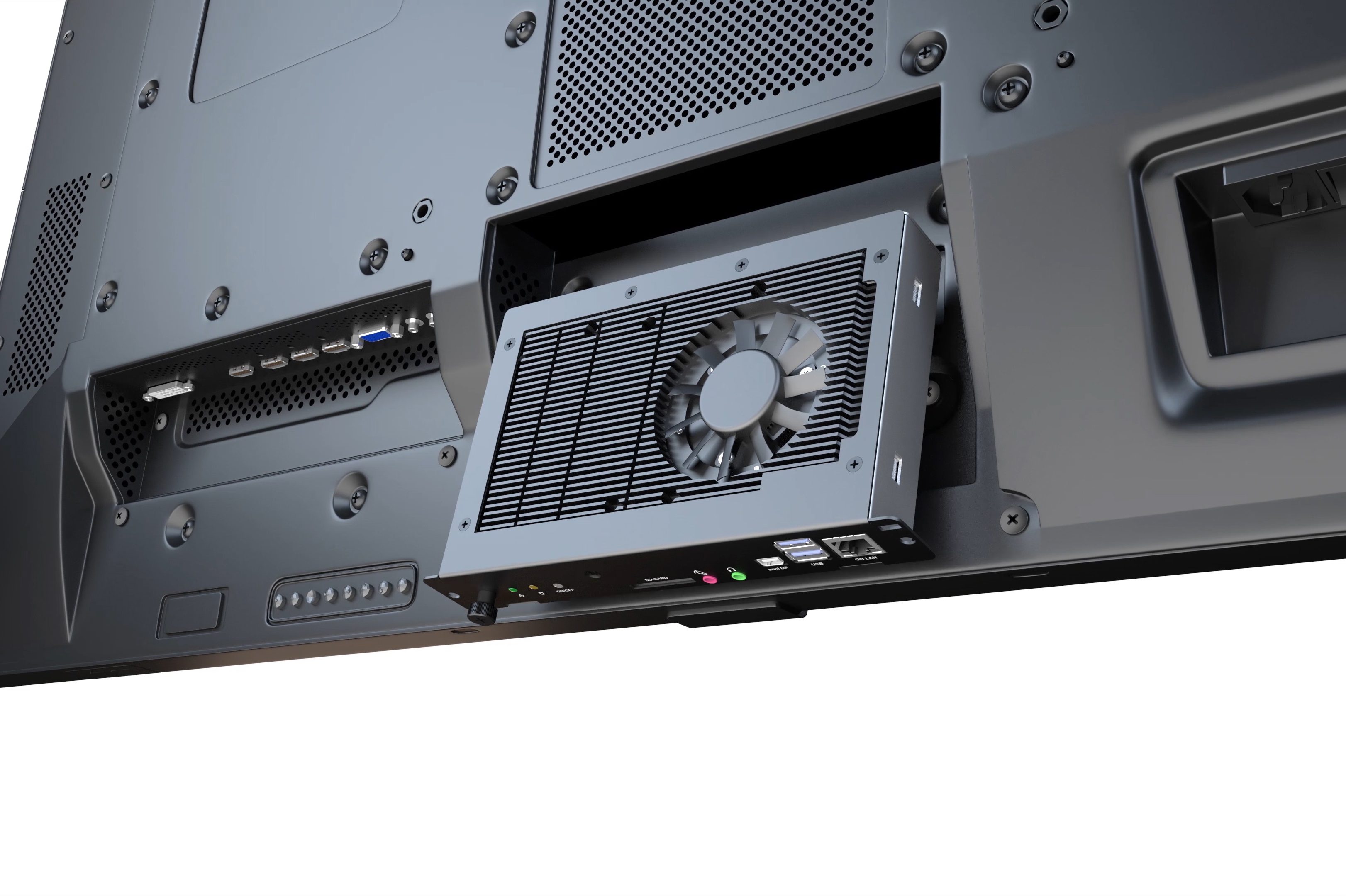
In digital signage it’s the display that gets the glory – for obvious reasons. Less visible, but arguably at least as important, is the player that delivers the content. Ian McMurray finds out what’s going on behind the screen.
Back in the 1980s, AI came – albeit briefly – to the technology frontline, powered by a programming language called Lisp. Two companies, Texas Instruments and Symbolics, developed hardware platforms optimised for the Lisp environment. They enjoyed a couple of years of success before PC hardware had become so capable, it could execute Lisp faster than a purpose-built machine – at substantially less cost.
In many ways, that’s reflective of a recurring scenario in hardware technology. Take graphics, for example. Applications that once required a discrete graphics processor now perform at least as well on a general-purpose processor. It’s a scenario that’s being re-enacted today in the world of digital signage players, with purpose-built platforms vying with solutions built on industry-standard – commodity, even – hardware.
Four choices
A prospective digital signage customer has four primary choices (although the lines can be blurred): application-specific, PC-based, add-on module and screen-integrated. Brice McPheeters, business development manager at NanoLumens, attempts to characterise some of the options.
“Perhaps the most ‘knocked’ media player is the player integrated into the display, with its minimal provision for peripherals, marginal computing capability and lack of upgradability,” he says. “On the other hand, it’s everything you need in one unit. There are users for whom that will perform to their limited specification. Then, you have PC-based platforms that are inherently open, allowing for multiple content options and are easily upgradeable – but that often comes at the price of potential stability issues and security flaws. Beyond those two options, you have the purpose-built solutions, which are often a bit pricier and not as open – but you get superior stability.
“Of course, we’re speaking in generalities here,” he smiles, “as there are some players that cross these boundaries. However, the point is: I don’t think there is any player type that is necessarily disadvantaged. It all comes down to what the client needs.”
Jeff Hastings, CEO of BrightSign, is somewhat less equivocal. “If you want to toast bread, you use a toaster, not an oven or a blowtorch, right?” he laughs. “If you want digital signage, use a player built for the job. PCs were created to run Windows and weren’t created for digital signage. An issue cited by many integrators is the need to keep installing patches and updates – often for functions that the signage doesn’t even use.
“Digital signage players now support technology advances that enable all the features and functionality of a high-end PC, without the PC hassles and Windows software crashes – and without the high price tag,” he goes on. “I expect the trend to continue and the market share of PCs and non-dedicated solutions to diminish.”
Optimum price/performance
He has an ally in Francesco Ziliani, CEO of SpinetiX, who acknowledges the advantages of display-integrated and PC-based solutions – but is positive that their minuses far outweigh their pluses. For him, there is clearly an ideal solution.
“Hardware designed specifically for digital signage will always deliver the optimum price/performance for a professional solution,” he says. “It delivers low maintenance, low operational costs because it is more durable, more stable and is designed for commercial installation.”
There is, of course, another side to the story.
“There’s a home for every product in the market, but there are clearly some defining differences between these products,” believes Caroline Injoyan, business development manager at Matrox Graphics, which offers a range of digital signage solutions. She notes the ease and simplicity of built-in players, and the advantages of purpose-built players.
“However,” she continues, “dependant on the potential uses, focused functionality is a double-edged sword, as these are cookie-cutter solutions that don’t leave room to be upgraded with enhanced feature sets. PC-based systems are where true flexibility comes in. PCs have a huge degree of scalability, allowing multiple cards with varying features to be installed, upgraded or swapped for the needed feature set. Because of the raw horsepower a PC can devote to processing, high resolution, large-format content is dealt with more easily and with fewer issues.”
Avoiding hassle
Thomas Walter, section manager, strategic product marketing at NEC Display Solutions Europe, believes in the advantages of in-built players – but with a caveat. “Displays today have a much longer lifecycle than the player source,” he says. “With this in mind, buying a built-in solution simply does not make sense in the mid to long term: if player requirements change, the user has to replace everything, including the display.”
“Solutions that are completely embedded but remain interchangeable provide the best performance for advertisers over the years,” he goes on. “Avoiding the hassle with external cabling, storage and mounting of the player solution, the embedded digital signage player can be easily interchanged and upgraded when a new performance level or servicing is required.”
His colleague Ulf Greiner, who is senior product manager, solutions, notes how NEC has introduced a display capable of hosting a Raspberry Pi Compute Module 3 that includes features specifically designed for digital signage, such as extended memory and preloaded video decoding licences.
“Since the Raspberry Pi started as a computing toy four years ago, it has developed into a serious and reliable computing machine with strong Quad Core 1.2GHz processing performance and graphic capabilities for crisp playback of full HD videos,” he claims. “The Raspberry Pi also perfectly serves the huge trend towards IoT. With all interfaces integrated into the screen, it can easily be made part of a network environment and even control network signage systems.”
www.brightsign.biz
www.matrox.com
www.nanolumens.com
www.nec-display-solutions.com
www.spinetix.com







